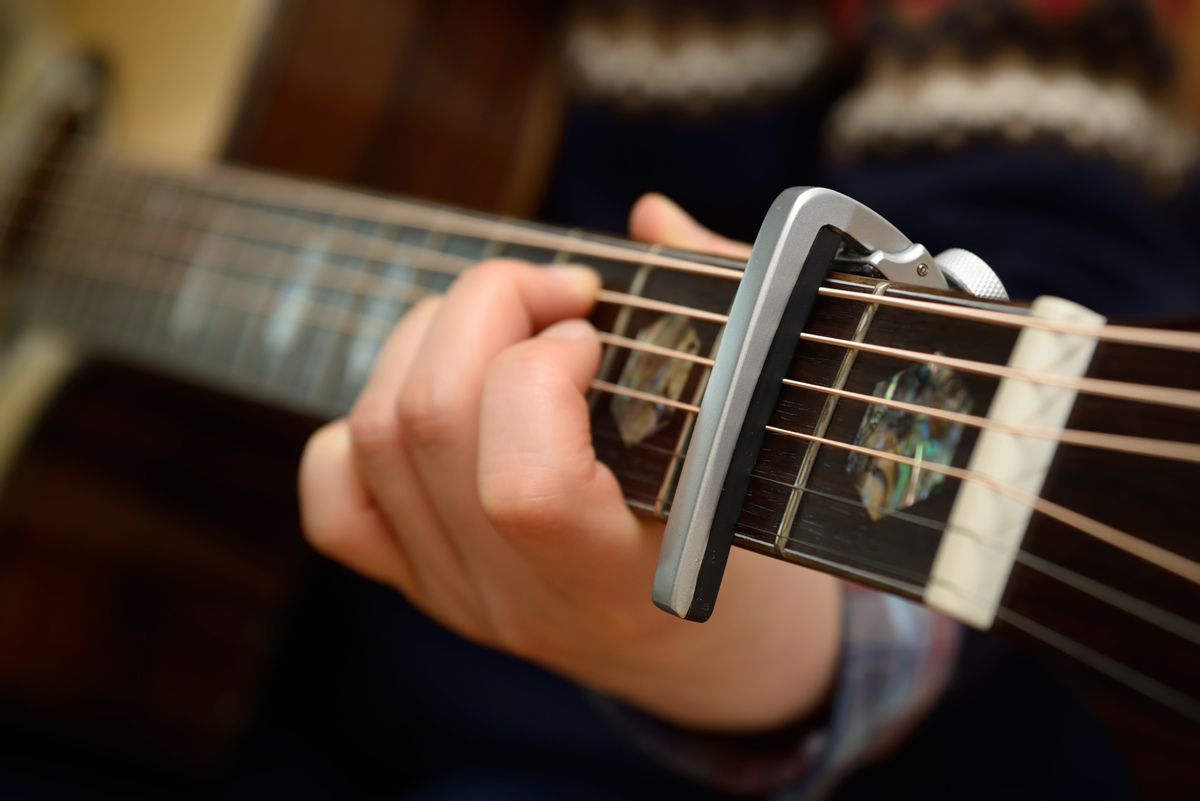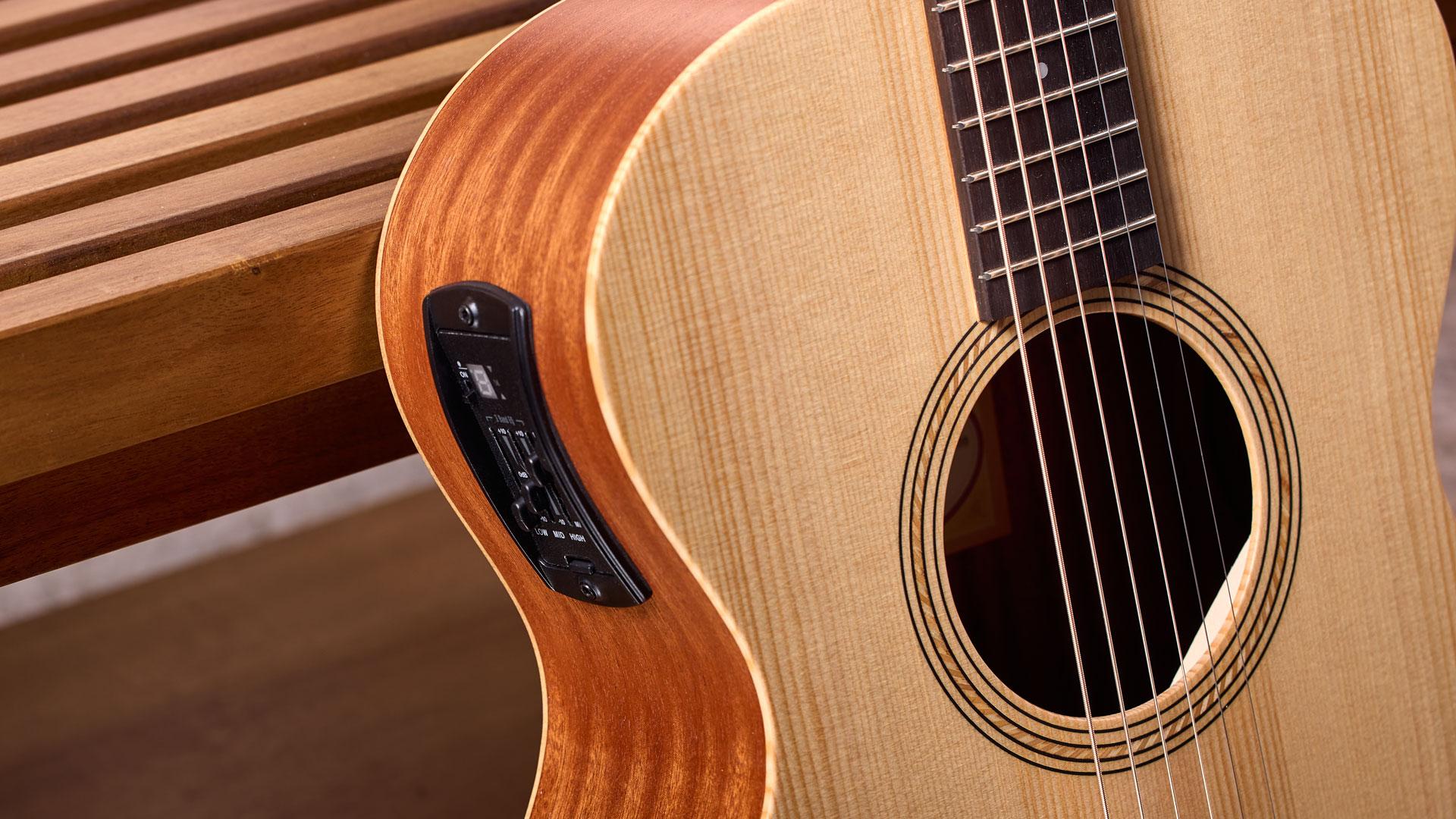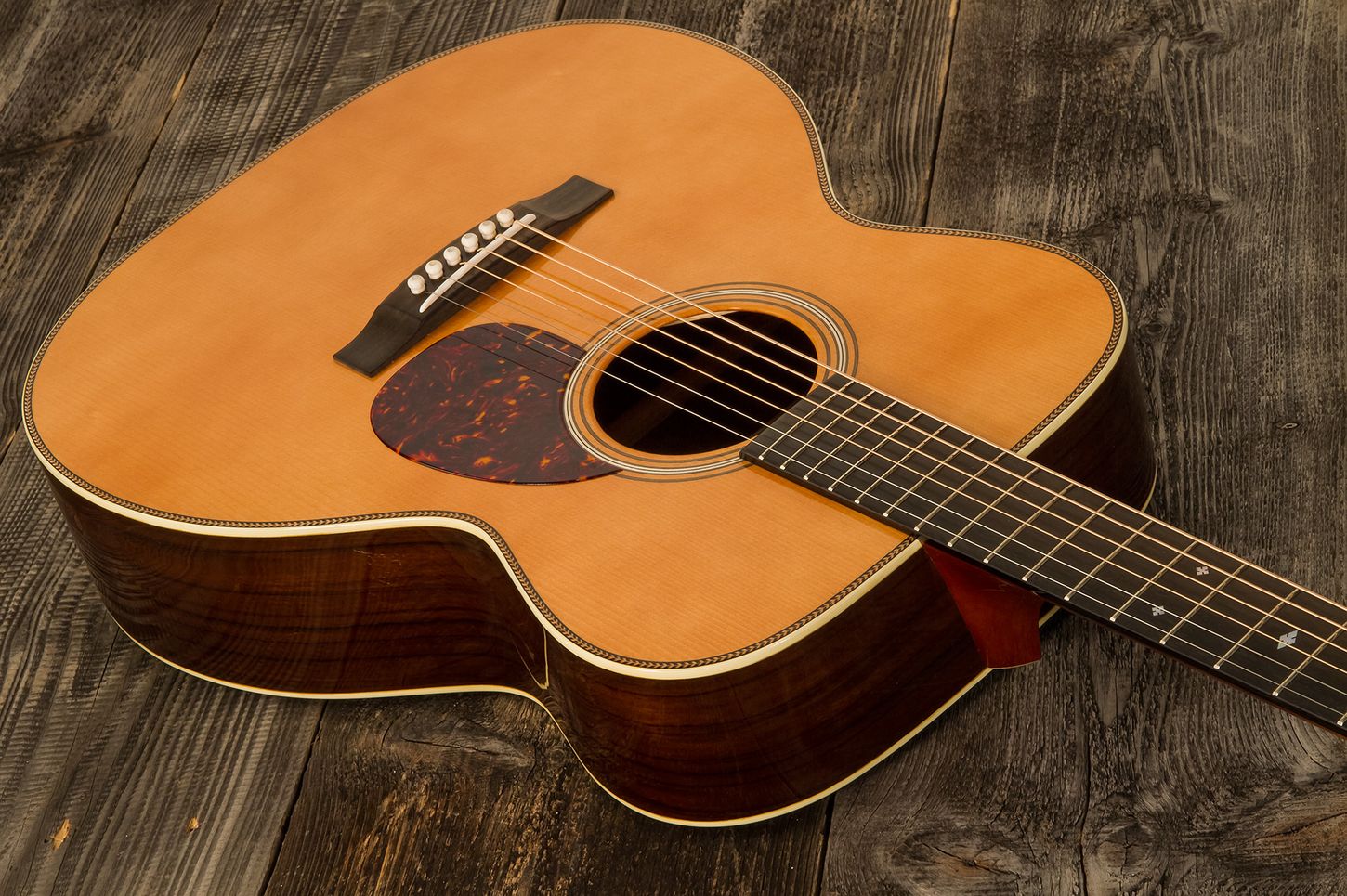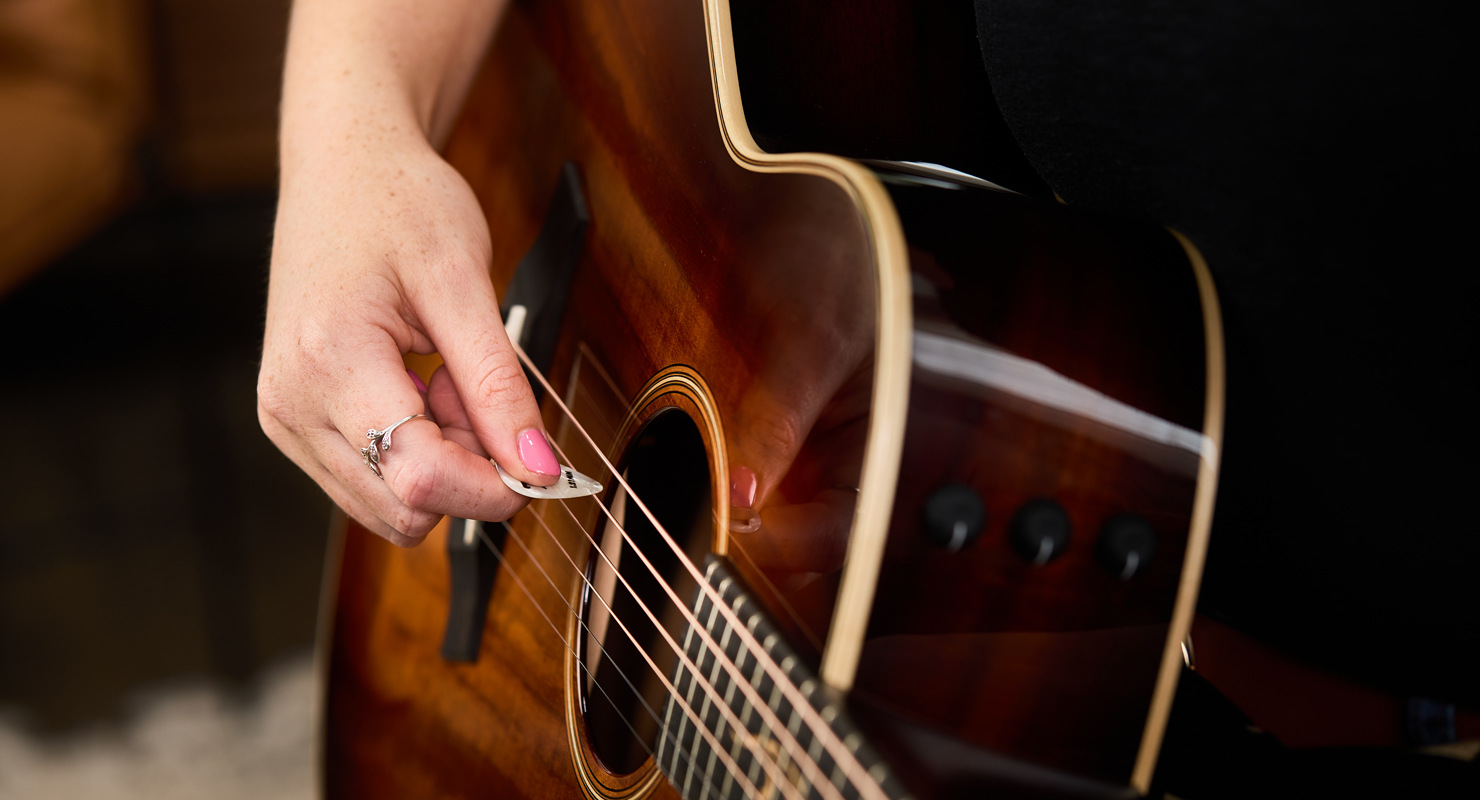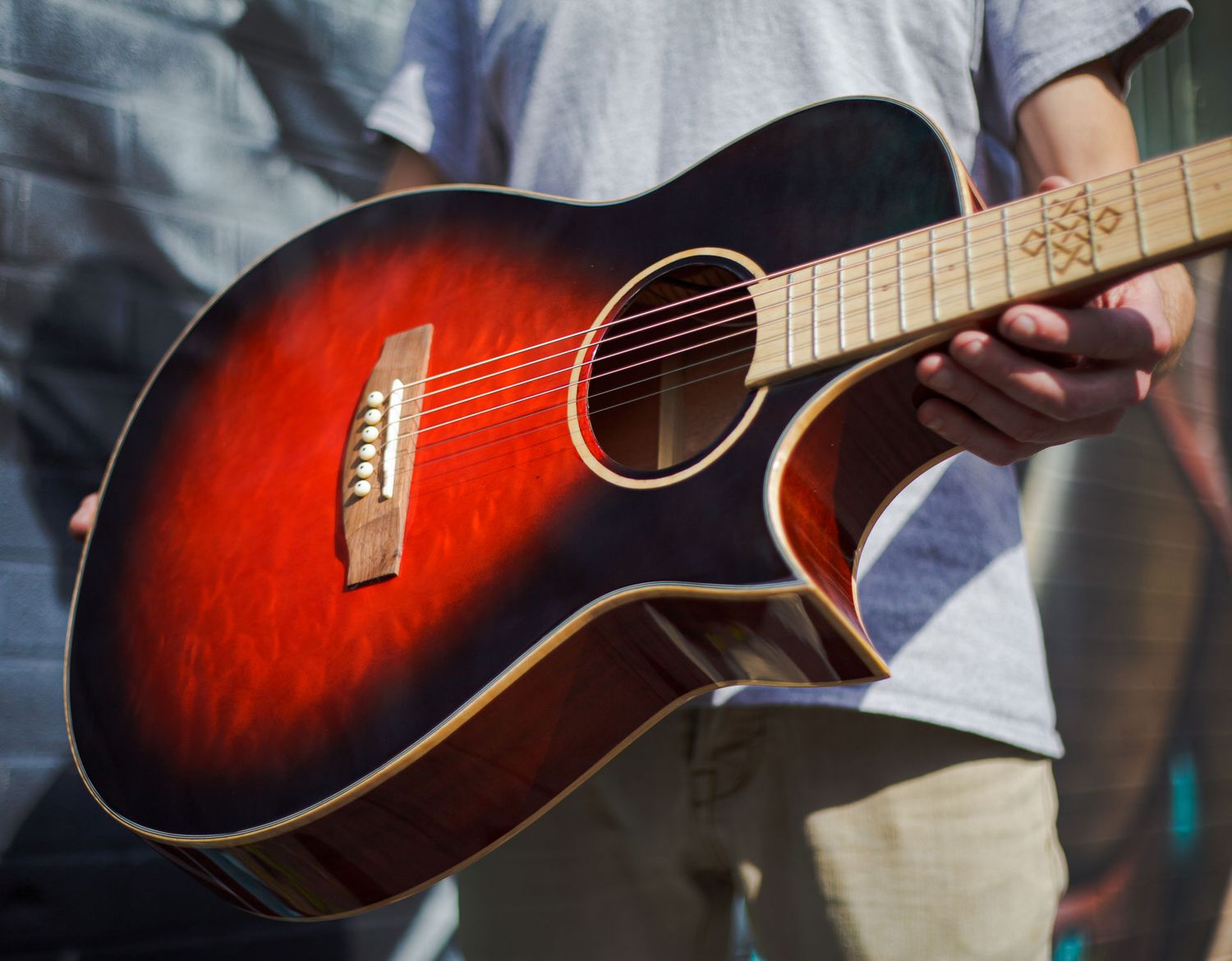Home>Instruments>Guitar>How To Do A Hammer On A Guitar


Guitar
How To Do A Hammer On A Guitar
Modified: February 15, 2024
Learn how to do a hammer on a guitar with our step-by-step guide. Master this essential technique and take your guitar playing to the next level.
(Many of the links in this article redirect to a specific reviewed product. Your purchase of these products through affiliate links helps to generate commission for AudioLover.com, at no extra cost. Learn more)
Table of Contents
Introduction
Playing the guitar is a deeply rewarding and expressive art form, allowing musicians to convey a wide range of emotions through their instrument. One of the key techniques that can greatly enhance a guitarist's playing style is the hammer on. This technique is commonly used in various genres of music, including rock, blues, and metal, and mastering it can significantly elevate the quality of your playing.
The hammer on is a fundamental technique that adds fluidity and dynamics to your guitar playing. When executed correctly, it enables you to produce seamless, legato notes that flow effortlessly from one to the next. Whether you're a beginner or an experienced guitarist looking to refine your skills, understanding and practicing the hammer on is essential for expanding your musical repertoire.
In this comprehensive guide, we will delve into the intricacies of the hammer on technique, providing step-by-step instructions, valuable tips, and common mistakes to avoid. By the end of this article, you will have a solid grasp of how to perform a hammer on and be well-equipped to incorporate this technique into your playing with confidence and finesse. So, grab your guitar, get comfortable, and let's embark on this enriching musical journey together.
What is a Hammer On?
A hammer on is a guitar playing technique that allows a guitarist to produce a smooth and connected sound by using the fretting hand to sound a note without picking it with the strumming hand. This is achieved by “hammering” a finger onto the fretboard with enough force to produce a clear and resonant sound. The resulting effect is a seamless transition between two or more notes, creating a legato sound that is characteristic of the hammer on technique.
When executing a hammer on, the initial note is produced by picking or plucking the string with the strumming hand, and the subsequent note is produced by quickly pressing down on a higher fret with the fretting hand, generating the desired pitch without re-picking the string. This technique is denoted in guitar tablature by the letter “h” placed between the initial and hammered-on notes, indicating the transition from one note to the next without the need for additional picking.
The hammer on technique is a staple in the arsenal of guitarists across various genres, as it enables them to create fast, fluid, and expressive passages. It is commonly used to add embellishments, create melodic runs, and infuse solos with captivating musical phrases. Furthermore, the hammer on is often paired with the pull-off technique, allowing for seamless transitions between ascending and descending notes, enriching the musicality and depth of the guitarist’s performance.
Understanding the mechanics and nuances of the hammer on is crucial for expanding a guitarist’s expressive capabilities and adding depth to their playing. Whether used in melodic solos, rhythm guitar parts, or intricate lead passages, the hammer on is a versatile and indispensable technique that can greatly enhance the musicality and artistry of a guitarist’s performance.
How to Perform a Hammer On
Mastering the hammer on technique requires precision, control, and a thorough understanding of the mechanics involved. To perform a hammer on effectively, follow these step-by-step instructions:
- Start with Proper Hand Position: Begin by assuming a comfortable and ergonomic hand position on the fretboard. Ensure that your fretting hand is relaxed, with your fingers positioned directly above the frets to facilitate clean and accurate hammer ons.
- Play the Initial Note: Use your strumming hand to pick or pluck the string, sounding the initial note. This note will serve as the starting point for the hammer on.
- Apply Firm Pressure: With a swift and controlled motion, use your fretting hand to “hammer” a finger onto the fretboard, directly above the target fret. Apply enough force to produce a clear and resonant sound without causing the note to sound muted or indistinct.
- Focus on Accuracy: Aim for precision and accuracy in your finger placement. The finger should make firm contact with the fretboard, generating the desired pitch without any buzzing or unintended string noise.
- Maintain Consistent Timing: Practice achieving a seamless transition between the initial note and the hammered-on note. The timing of the hammer on should be synchronized with the rhythm of the music, ensuring that the transition occurs smoothly and in harmony with the surrounding notes.
- Build Speed and Control: Gradually increase the speed of your hammer ons while maintaining clarity and control. Focus on developing dexterity and strength in your fretting hand to execute rapid and precise hammer ons across different frets and strings.
By following these steps and dedicating focused practice to the hammer on technique, you can refine your ability to perform seamless and expressive hammer ons, adding a new dimension of musicality to your guitar playing. Remember that consistent practice and attention to detail are essential for mastering this technique and incorporating it effectively into your musical repertoire.
Tips for Mastering Hammer Ons
Mastering the hammer on technique requires patience, dedication, and a strategic approach to practice. To enhance your proficiency in executing hammer ons, consider the following valuable tips:
- Focus on Finger Strength and Control: Engage in finger-strengthening exercises to develop the necessary dexterity and control for executing powerful and precise hammer ons. Utilize finger exercises and drills to enhance the strength and independence of each finger, enabling you to produce clear and resonant hammered-on notes.
- Utilize Proper Fretting Hand Technique: Pay attention to your fretting hand position and technique. Ensure that your fingers are perpendicular to the fretboard, allowing for efficient and accurate hammer ons. Practice maintaining a relaxed yet firm grip on the neck of the guitar to facilitate smooth and effortless hammer ons.
- Gradually Increase Hammer On Speed: Begin practicing hammer ons at a moderate pace, focusing on clarity and precision. As you gain confidence and proficiency, gradually increase the speed of your hammer ons while maintaining control and accuracy. Consistent practice at varying tempos will contribute to your overall mastery of the technique.
- Emphasize Articulation and Expression: Approach hammer ons with a focus on musical expression and articulation. Experiment with varying degrees of force and dynamics when executing hammer ons, allowing for nuanced and emotive phrasing within your playing.
- Integrate Hammer Ons into Musical Phrases: Incorporate hammer ons into scales, licks, and musical passages to familiarize yourself with their application in a melodic context. Practice integrating hammer ons seamlessly within your playing, exploring different musical styles and genres to expand your versatility.
- Utilize Metronome Practice: Practice hammer ons with the aid of a metronome to develop a strong sense of timing and rhythmic precision. Consistent metronome practice will enhance your ability to execute hammer ons in sync with various musical tempos, fostering a solid foundation for musical performance.
By incorporating these tips into your practice routine and approaching hammer ons with focused determination, you can accelerate your progress and achieve greater proficiency in this essential guitar technique. Remember that consistent and mindful practice, combined with a patient and disciplined approach, is key to mastering the art of executing captivating and expressive hammer ons.
Common Mistakes to Avoid
While mastering the hammer on technique, it’s important to be mindful of common pitfalls that can hinder your progress and impede the clarity and effectiveness of your hammer ons. By recognizing and addressing these potential mistakes, you can refine your approach and achieve greater proficiency in executing this fundamental guitar technique. Here are some common mistakes to avoid:
- Insufficient Finger Pressure: One of the most prevalent mistakes when performing hammer ons is applying insufficient pressure with the fretting hand. Inadequate force can result in muted or indistinct notes, compromising the clarity and resonance of the hammered-on sound. Focus on applying firm and deliberate pressure to produce clear and resonant notes.
- Incorrect Finger Placement: Inaccurate finger placement on the fretboard can lead to buzzing, unintended string noise, or notes that fail to ring out effectively. Ensure that your fingers are positioned directly above the frets, allowing for precise and clean hammer ons without interference from adjacent strings.
- Overemphasis on Speed Over Clarity: While speed is an important aspect of executing hammer ons, prioritizing velocity at the expense of clarity and precision can compromise the overall quality of your playing. Strive to strike a balance between speed and clarity, gradually increasing your pace while maintaining a focus on articulate and well-defined hammer ons.
- Tension in the Fretting Hand: Excessive tension in the fretting hand can impede your ability to execute fluid and effortless hammer ons. Practice maintaining a relaxed yet controlled grip on the neck of the guitar, allowing for smooth and unhindered finger movements during hammer on passages.
- Inconsistent Timing and Rhythm: Inaccurate timing and irregular rhythm during hammer ons can disrupt the flow and coherence of your playing. Concentrate on synchronizing your hammer ons with the underlying rhythm of the music, ensuring that each hammered-on note seamlessly aligns with the intended beat and musical phrasing.
- Neglecting Variations in Dynamics: Failing to incorporate variations in dynamics and expression can lead to monotonous and uninspired hammer ons. Explore the use of varying degrees of force and intensity when executing hammer ons, infusing your playing with emotive and compelling musical articulation.
By remaining attentive to these common mistakes and actively working to address and rectify them, you can elevate the quality and impact of your hammer ons, ultimately enhancing the depth and expressiveness of your guitar playing. Through conscientious practice and a commitment to refining your technique, you can overcome these challenges and cultivate a mastery of the captivating and versatile hammer on technique.
Conclusion
Mastering the hammer on technique is a transformative endeavor that can greatly enrich your guitar playing, enabling you to infuse your music with fluidity, expression, and dynamic flair. By understanding the mechanics of the hammer on, practicing with dedication, and incorporating valuable tips into your routine, you can cultivate a mastery of this fundamental technique and expand your musical capabilities.
As you embark on your journey to refine your hammer on proficiency, remember that patience, persistence, and mindful practice are essential components of your growth as a guitarist. Embrace the process of honing your hammer on technique, celebrating each milestone and breakthrough along the way.
With consistent effort and a commitment to refining your playing, you will witness a remarkable evolution in your ability to execute captivating and seamless hammer ons, elevating your musical expression and performance to new heights. Whether you’re exploring melodic solos, crafting intricate lead passages, or adding embellishments to rhythmic guitar parts, the versatility and expressive potential of the hammer on technique will become a valuable asset in your musical repertoire.
So, pick up your guitar, immerse yourself in the art of the hammer on, and embrace the boundless possibilities that await as you integrate this technique into your playing. With each resounding note produced through the artful execution of a hammer on, you’ll reaffirm the power and beauty of music, creating an enduring connection between your instrument and your soul.
As you continue to refine your craft, remember that the journey of mastering the hammer on is as rewarding as the destination. Embrace the challenges, celebrate your progress, and let the melodic resonance of each hammered-on note inspire you to reach new heights of musical excellence.


